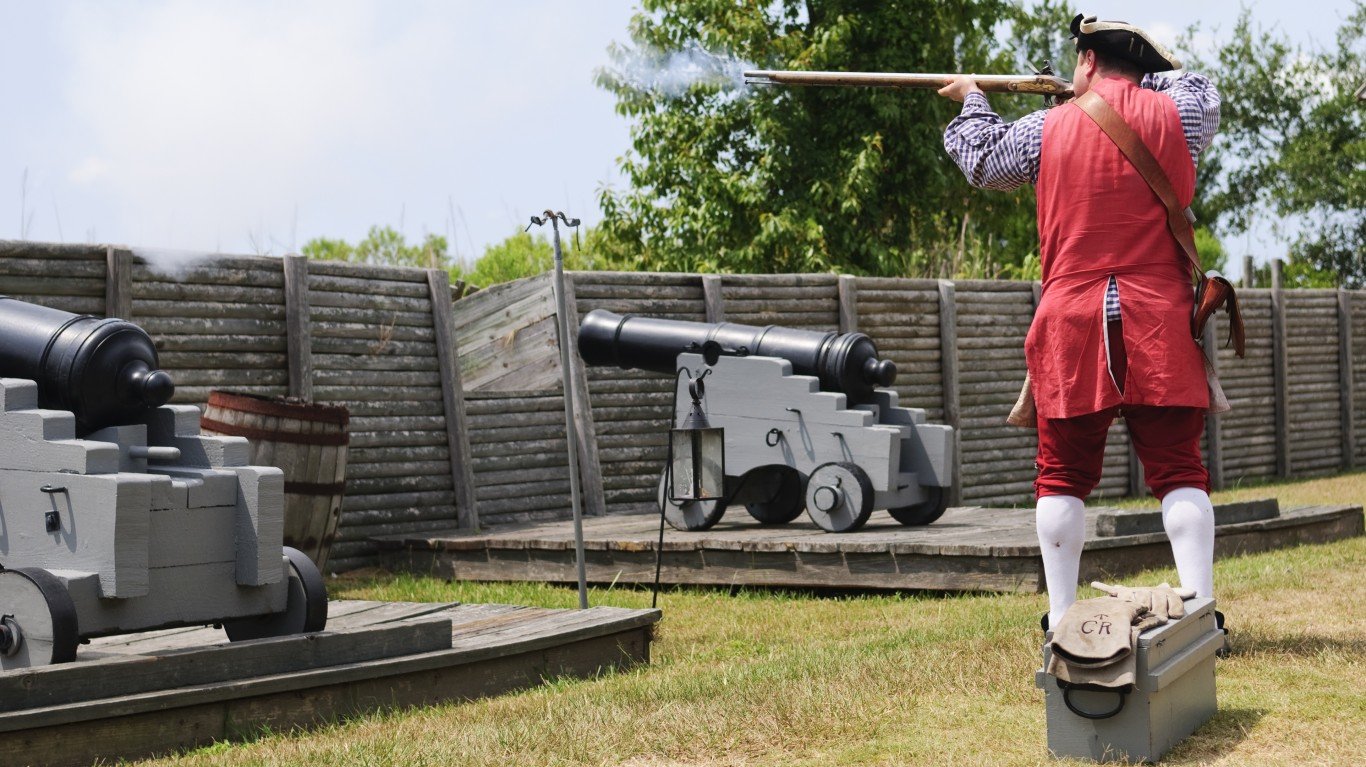

The technology of killing other humans faster, more easily, and in greater numbers is always advancing, but one thing remains the same: the method of killing usually relies on shooting small projectiles from metal tubes at high speeds. Firearms form the backbone and core of modern fighting forces. Without them, we would have to resort to methods of warfare not seen since the Middle Ages. But where did this staple of modern warfare come from? Who is credited with creating the gun? Why has it become so popular? This is the short and digestible evolution of firearms.
Background on firearms

What makes a gun, a gun? Is it the trigger, the sights, or even just the look and style? Essentially, every type of gun is any type of device that allows for the propelling of a projectile at high speeds using pressure or some kind of small explosion. No matter how advanced the technology inside a gun, it is still relying on the basic, ancient, and primitive principle of “big explosion makes small thing go fast”. No matter how civilized we think we’ve become when we eventually devolve into killing each other, we have yet to come up with a faster, cheaper, and more efficient way than putting a small piece of metal into each other.
For this list we will use the data on firearm invention and innovation available from public resources, starting in ancient China and looking into the future with the latest experiments that promise to change the way we think about guns. We will also focus on just personal weapons, ignoring the evolution of big guns like artillery and cannons.
Origins in China: The Fire Lance

The Asian continent used to be the center of military innovation and technological advancement. Up until the early modern era, Asian steppe nations, Chinese empires, and Middle-Eastern states were fighting in the varsity league of warfare while the rest of the world was still duking it out in junior varsity and amateur teams.
The beginnings of what would eventually become modern firearms appeared in China around the 9th century CE with the fire lance. This was a long spear-like weapon that was used similarly to how we use flamethrowers today. The user would sometimes put debris or shrapnel in the tube, making it function more like a gun, but it only had a range of about ten feet, and the earliest versions could only be fired once. Therefore, they were mostly useful as a weapon of intimidation, but they worked fantastically and convinced the other Asian nations to begin work on their own versions. The first artistic depiction of this protogun is in a 10th-century silk banner.
The fire lance was originally made of bamboo and paper but evolved into metal versions to better withstand the increasing power of the explosions they were creating. Other armies adopted them after seeing their effectiveness on the battlefield. They were particularly useful as a defensive weapon during sieges and against large masses of soldiers.
First Real Gun: The Hand Cannon

The successor of the fire lance was the hand cannon, also known as the handgonne or just gonne. This is the first true gun in history. It was much shorter than the fire lance, made of metal, and could be held while ignited. It had no firing mechanism and required ignition by touching an open flame to the touch hole. The hand cannon became widespread in China during the 13th century and quickly spread to the rest of the world.
The oldest example of these protoguns is the Heilongjiang hand cannon from around 1288 in the Achening District, China. It was discovered in the 1970s and is just over 34 centimeters long. It had no trigger, no sights, and no other features that we would identify with modern firearms.
The Arquebus
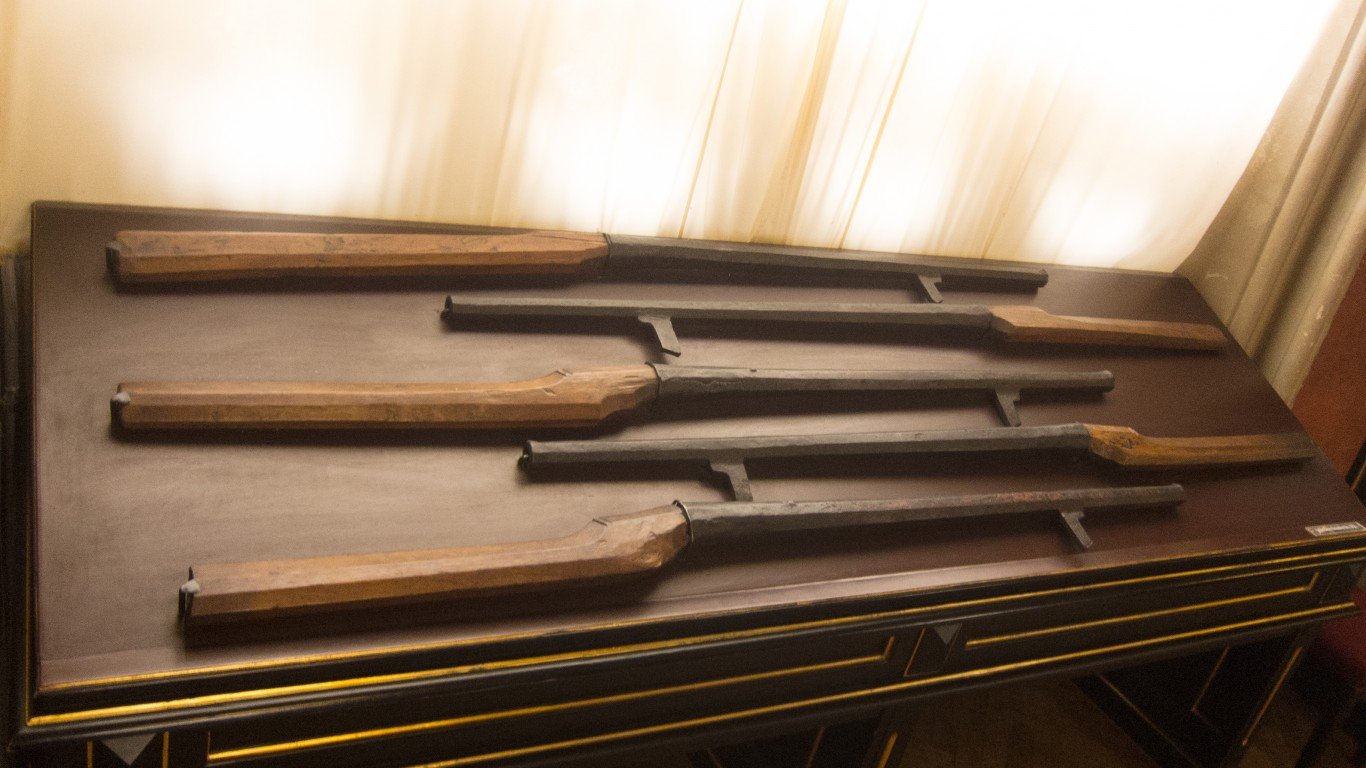
After its success in Asia, hand cannon technology spread Westward along the Silk Road to the Middle East and Europe around the 13th century. Armies in the Middle East saw the use of the hand cannon and incorporated it almost immediately into their arsenal, mostly as a defensive and intimidation weapon. It was during this time that the greatest scientific minds of the age, located in the Ottoman Empire, turned the hand cannon into a weapon of empires. Eventually, it evolved into the arquebus in the Ottoman Empire during the 15th century.
The arquebus is a long gun with a shoulder stock, priming pan, matchlock mechanism, and a trigger, turning it from a stationary siege and defensive weapon into a mobile, handheld firearm. A heavy version of the arquebus was invented in Europe to better penetrate plate armor and was called a musket. The distinction remained for centuries, but over time, any form of smooth-bore, long gun was eventually called a musket, and the name replaced the arquebus.
The arquebus was incorporated into most armies in Europe and quickly spread East. Because of the limitations of the weapon, it was often paired with other infantry or weapons to make up for its shortcomings. The first country to make widespread use of the arquebus was the Ottoman Empire, and they did so with famous success. The deadly Janissary Corps, who were the first modern standing army and the Sultan’s household troops, were the first infantry force to be equipped with arquebuses as part of their standard equipment. The Janissary corpse, through the use of their superior firearms, helped the Ottomans conquer much of their territory.
The first battle that was won due to the use of firearms was the Battle of Cerignola on April 28, 1503, between the French and the Spanish. In this battle, 1,000 Spanish arquebusiers, fighting from behind a defensive ditch, completely decimated the attacking French pikemen and cavalry, leading to a resounding Spanish victory and solidifying the role of guns on the battlefield.
The Musket
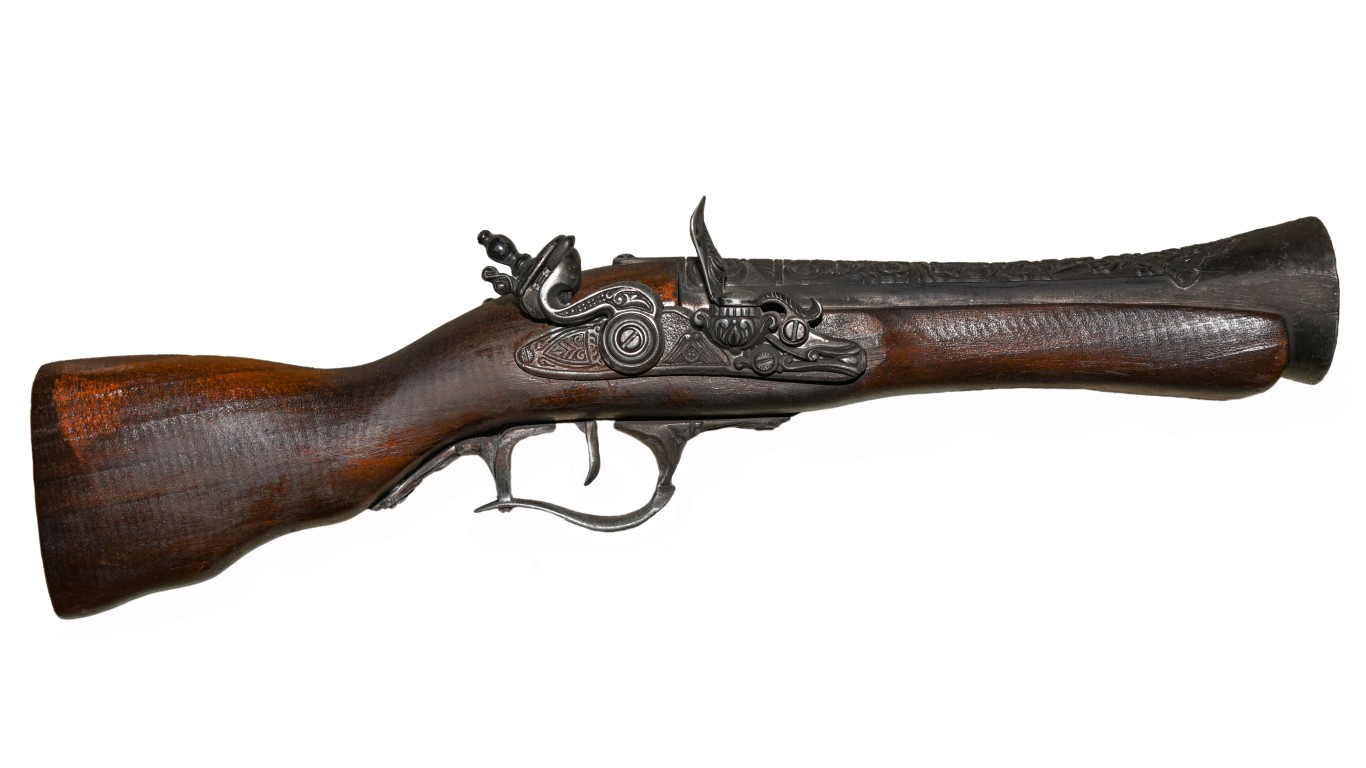
The aquebus, or the musket, continued to evolve with more effective trigger and firing mechanisms. Paper cartridges were introduced to make reloading faster. France introduced the bayonet in the 16th century.
The musket we recognize today, which started out as the heavy variant of the arquebus, appeared in the early 16th century CE. Like its predecessor, it was a smoothbore, muzzle-loaded long gun. The reason why it became so popular is because it was able to pierce through plate armor, rendering the iconic armor of the Middle Ages entirely useless and eventually a liability. After the introduction of the musket to the battlefield, there was no armor that could protect you against a musket ball, so your best chance of survival became superior numbers and agility. So, if you’ve ever wondered why armies got rid of the expensive plate armor, now you know why
There were also a variety of different guns that were introduced during this time, including flintlocks, wheellocks, doglocks, snaplocks, matchlocks, percussion caps, blunderbusses, and many other technologies to make the guns easier to use, faster to reload, and safer to fire. While all these changed the way the musket functions and handles, the basic use of the musket remained the same.
Enter the Rifle
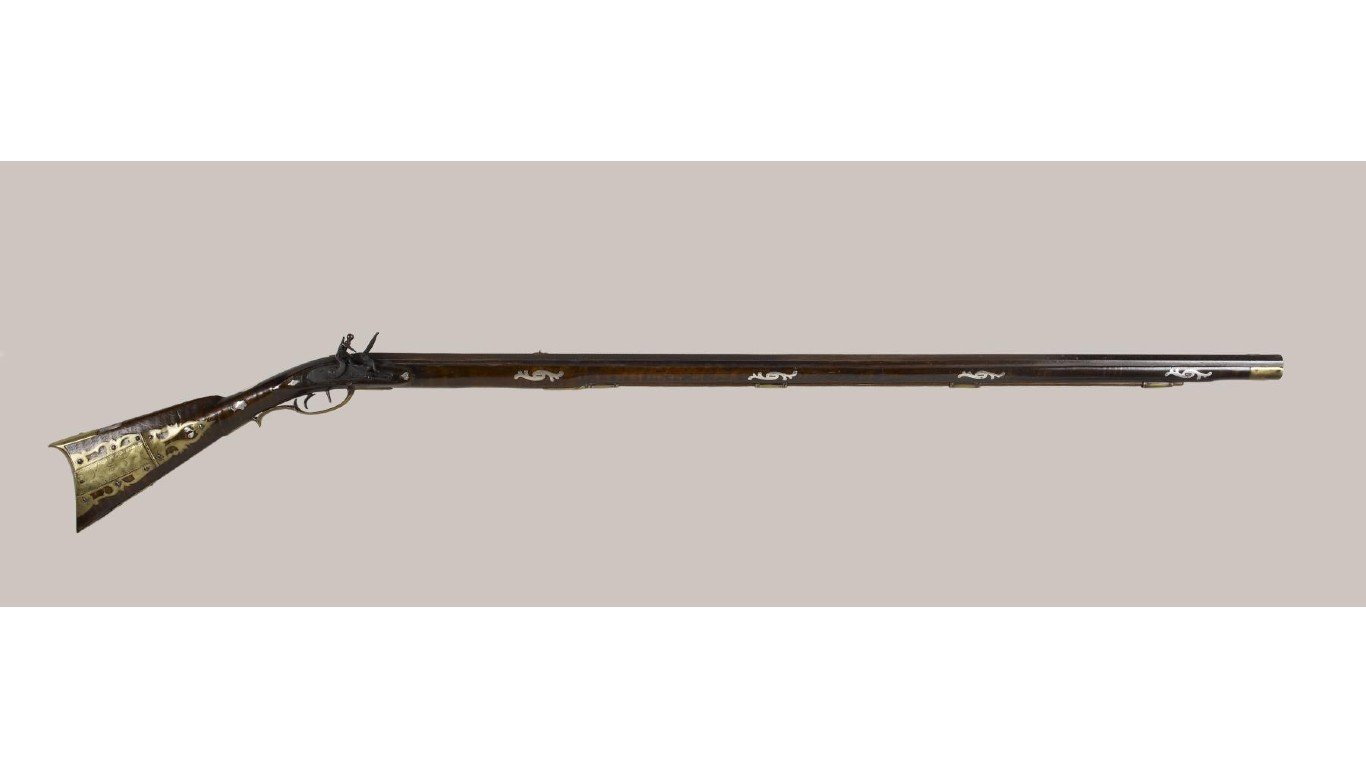
Rifling technology had existed in Europe ever since the late 1400s, but problems with it prevented armies from adopting it, preferring the simpler and easier musket. Rifled muskets were the same as regular muskets but their barrels had grooves cut into the inside of the barrel, causing the bullets to spin as they were fired, which increased range and accuracy. The principle came from archers who realized that adding a spin to their arrows by adjusting the feathers of their arrows made them much more accurate. It wasn’t until the 17th and 18th centuries that rifles advanced enough to surpass the use of the musket on the battlefield. The musket continued to be used by regular troops, but rifles were used by marksmen and specialist infantry forces because they were more expensive to make.
This led to armies abandoning the use of massed attacking infantry formations in the later 1800s, since the rifle was far more accurate, had a longer range, and could still be reloaded as quickly as the musket. This meant that troops attacking in formation were in range of accurate shots for much longer than before, and while battles previously lasted for only a handful of musket volleys, a defending army with rifles could fire dozens of shots before the attackers were even in range to return fire.
Evolution of the rifle
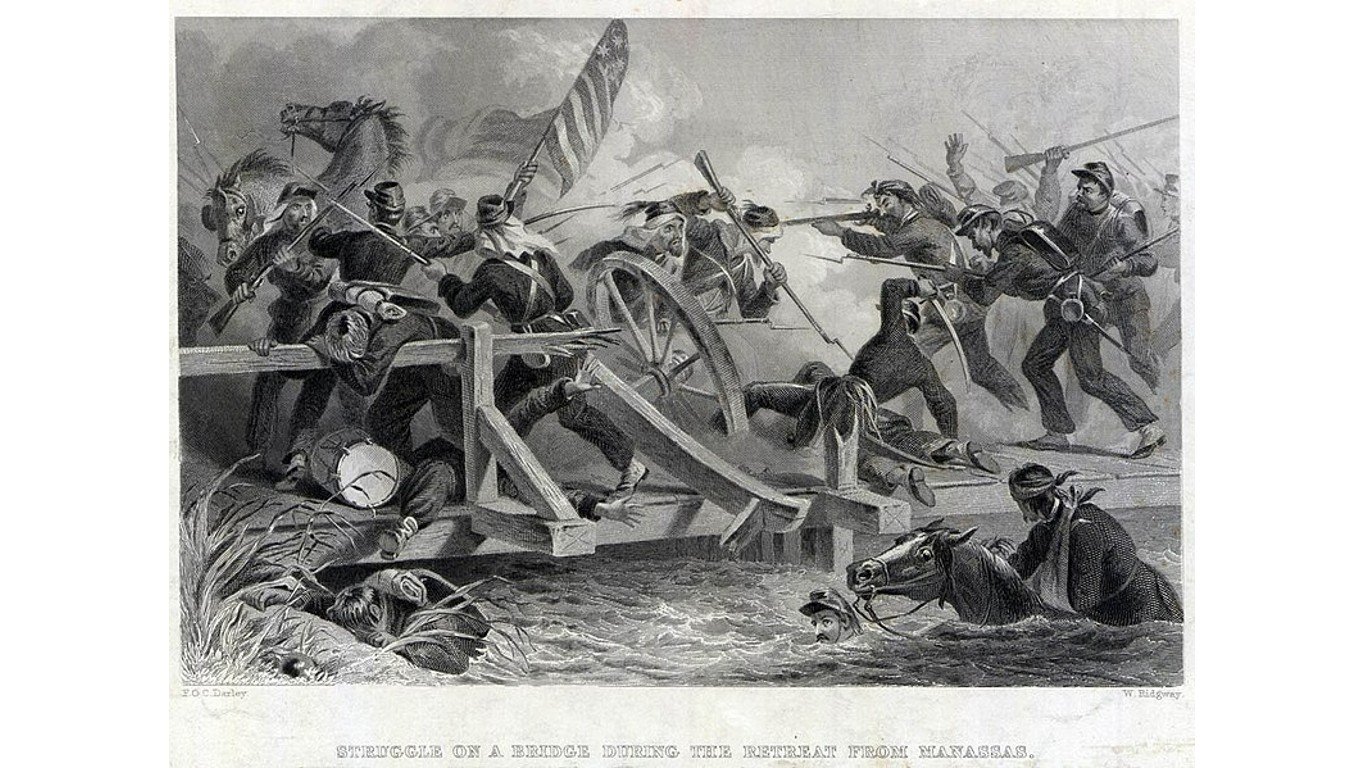
With the problem of accuracy solved, the next evolution came in the form of addressing the issue of slow and difficult reloads for muzzle-loading guns. The first solution was the breech-loading rifle. Breech-loading rifles allow a person to load the next round from the read (or the breech) of the gun. This had several advantages: it significantly improved the reload time, allowing the gun to be fired many times faster, it kept the barrel cleaner before firing, and allowed a soldier to reload while lying down. This last point is one of the most significant changes to gunpowder warfare we often don’t think about. The ability to lay down, fire, reload, and fire again without standing up allowed soldiers to remain relatively concealed and protected without standing up to reload. It was a development that, again, helped the defending side much more than the attackers.
In the 1850’s the next great advancement of breech-lading rifles came in the form of the Springfield rifle, invented in Springfield, Massachusetts. The Springfield used ammunition cases, so the soldiers no longer had to pour loose gunpowder into their guns themselves, making firing safer and quicker. These quickly replaced the rifled muskets and became the standard weapon used during the American Civil War.
Modern Warfare: The Repeater
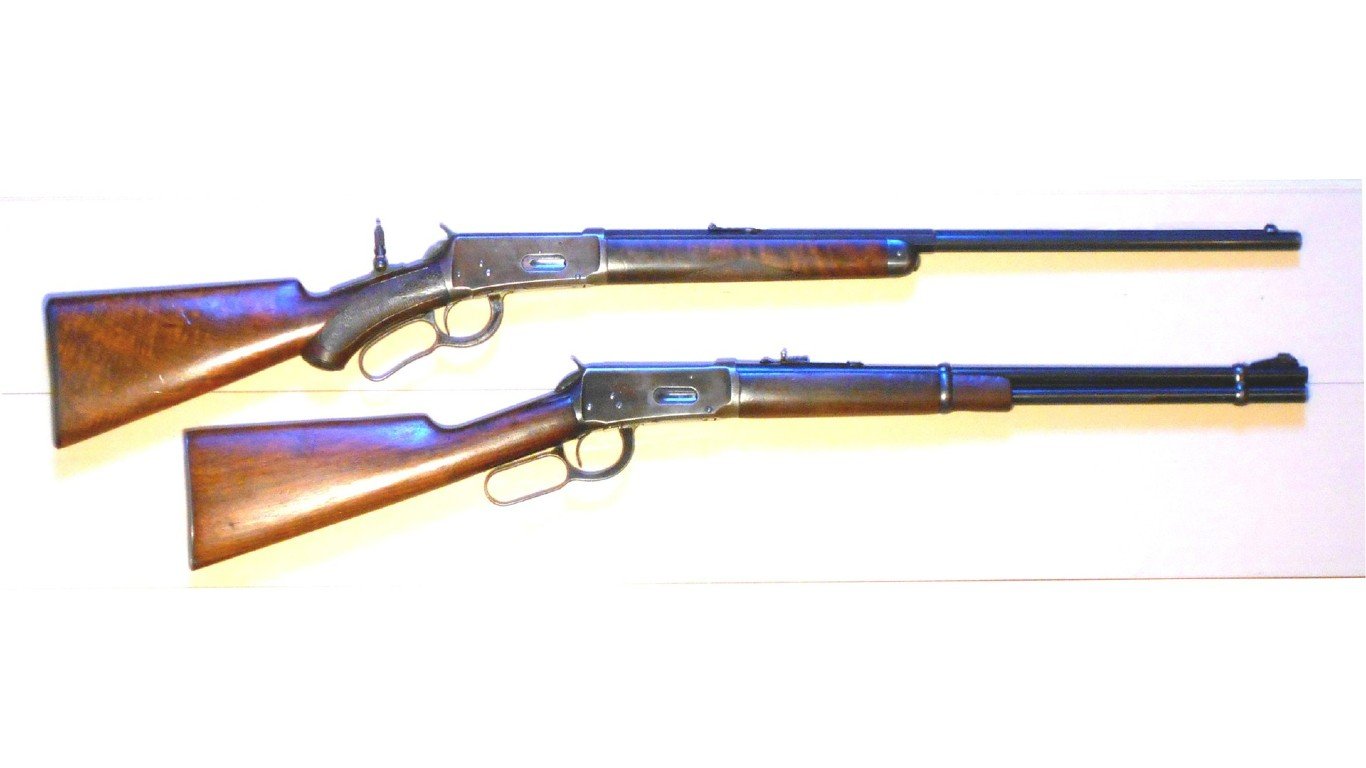
As warfare adapted to fighting from entrenched positions instead of massed infantry, armies needed to be able to fire more bullets if they were to have any success in hitting the enemy. This led to the invention of the revolving rifle, which was a rifle with a revolving mechanism adapted from revolving pistols.
Subsequently, the repeating rifle was invented in 1866 in the form of the Winchester repeating rifle and allowed the user to pull on a lever to reload the rifle instead of inserting a new round each time. The repeating rifle allowed soldiers to fire a handful of shots before needing to insert the next batch of rounds into the gun.
Development of the Modern Firearm
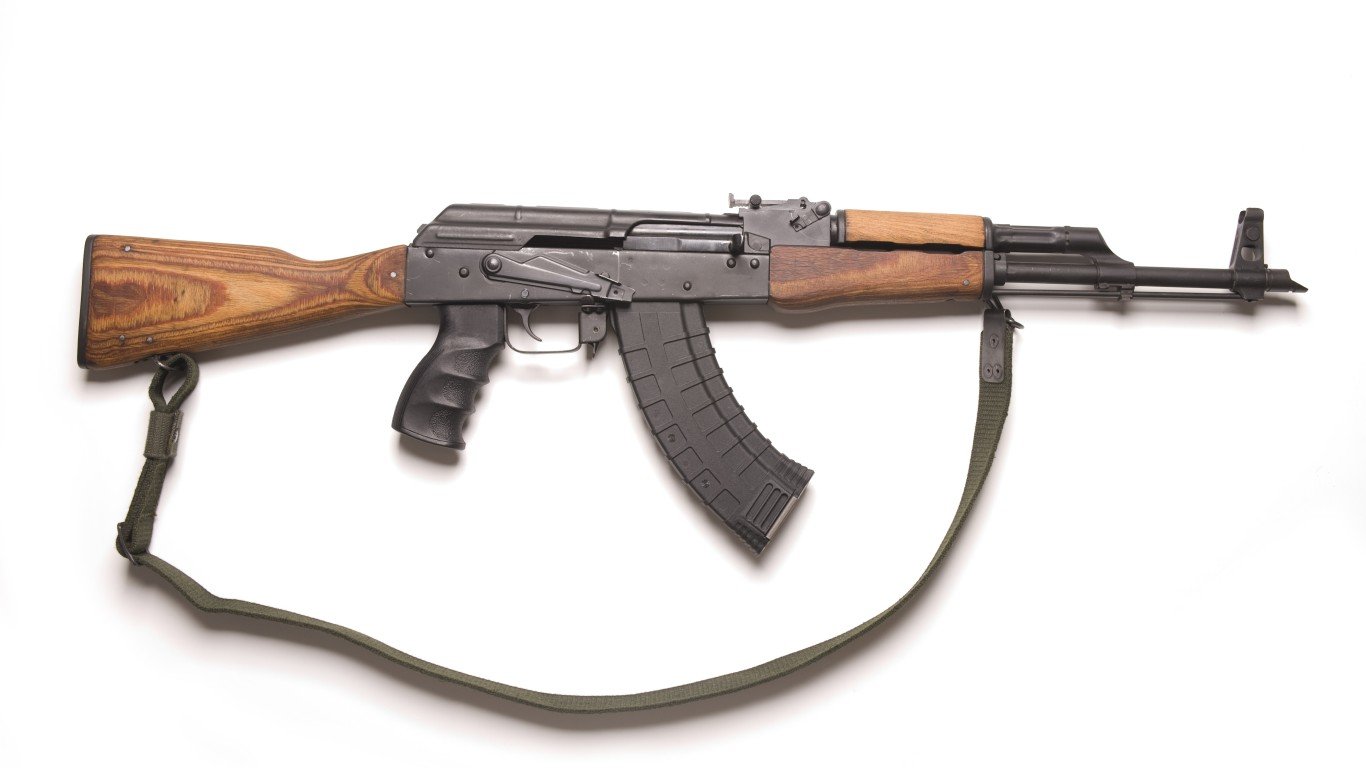
What separates the modern rifle from the rifles of the past is the ability to self-load and fire repeatedly without needing to reload or prepare the rifle between shots. Eventually, guns were adapted to use magazines, so instead of loading each round individually, soldiers only had to load one magazine that had been pre-loaded with rounds before the battle.
The first self-loading gun was the Gatling gun, which was a revolver fired by turning a hand-crank and used during the American Civil War. The Gatling gun is the forerunner to machine guns that came later. The first self-loading rifle didn’t come until the beginning of the 20th century in the form of the Mondragón rifle which saw use in the conflicts leading up to and during World War I. While the Gatling gun could self-load, it required multiple people to operate, while the Mondragón rifle could be used by any soldier.
Self-loading, repeating rifles continued to be adapted into different versions, like the submachine gun, to better adapt to certain situations. However, the first successful assault rifle, the StG 44, was invented by Germany and introduced during World War II. The assault rifle was more powerful and had a longer range than the submachine gun, but a shorter range and less power than single-fire rifles. However, their ability to fire quickly, reliably, and accurately more than made up for this shortcoming, and the assault rifle was adopted as the standard weapon of all modern armies.
During World War II, analysts discovered that most of the engagements were happening at ranges of less than 300 meters, so the range and power of bigger, longer guns were wasted, and the ability to fire more shots was much more useful.
Most of the world was still using other weapons up until the Vietnam War when the M16 was introduced, convincing NATO and other countries to incorporate assault rifles into their militaries. The most successful and most manufactured assault rifle is the AK-47, due to its ruggedness, reliability, and ease of use. Derivatives and variations of these rifles continue to be used today and form the backbone of any modern force.
Future Weapons

What does the future of the firearm hold? Nobody knows, but there are signs of where the technology may develop.
First, 3D printing technology is changing the form, availability, and regulation of guns. The ability to print your own untraceable gun at home with as little as $500 in parts is a growing concern for governments and regular citizens.
Second, the need for gunpowder in guns creates a number of issues. It needs to be sourced and processed before it can be used in a round, and those rounds need to be transported safely to the battlefield. Even modern rounds can still cause problems and accidents with the dangerous technology injure many people every year. That’s why scientists have begun experimenting with other ways of making small bullets go fast. One solution is with the railgun, which uses electromagnetic force to launch a projectile at very high speeds. It has no moving parts and large versions have already been tested with success. Other experimental hand-held firearms include interesting options developed by the Nazis during WWII (like the sound gun and energy gun), to more realistic options like hand-held laser weapons.
Time will only tell what will eventually replace gunpowder, but whatever it is, it is going to be a game-changer.
Sponsored: Want to Retire Early? Here’s a Great First Step
Want retirement to come a few years earlier than you’d planned? Orare you ready to retire now, but want an extra set of eyes on your finances?
Now you can speak with up to 3 financial experts in your area for FREE. By simply clicking here you can begin to match with financial professionals who can help you build your plan to retire early. And the best part? The first conversation with them is free.
Click here to match with up to 3 financial pros who would be excited to help you make financial decisions.
Thank you for reading! Have some feedback for us?
Contact the 24/7 Wall St. editorial team.


